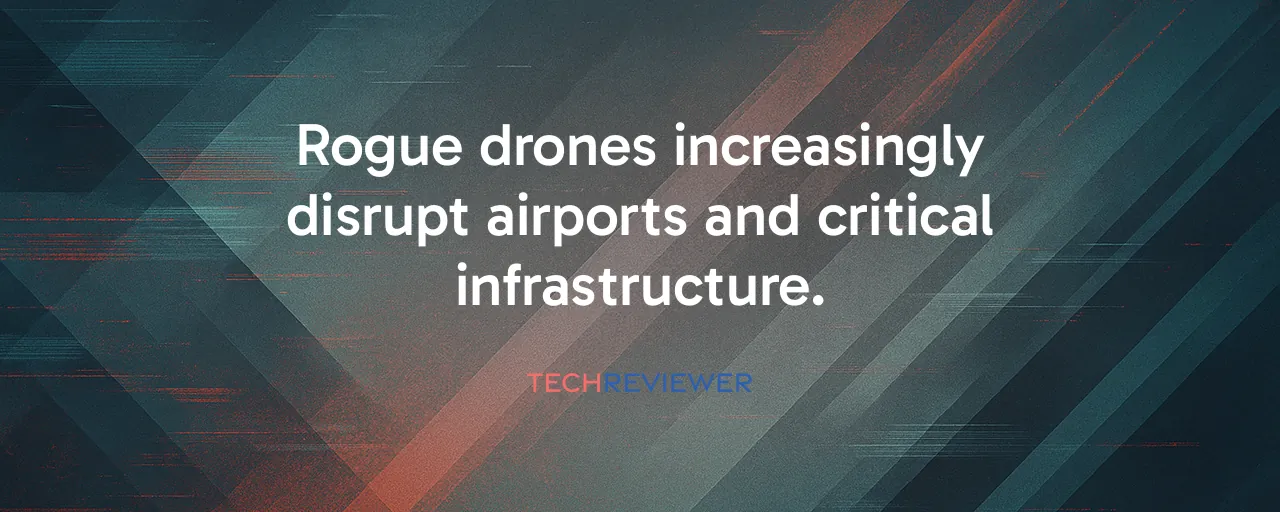Drones Invade the Skies
Drones have taken flight in ways no one expected. Once the domain of hobbyists snapping aerial photos, these devices now pose real threats to airports, power plants, and even government buildings. In Germany, 172 drone-related disruptions rattled air traffic from January to September 2025, a 33% jump from the 129 incidents in 2024. The chaos at Munich Airport during Oktoberfest 2025, where 46 flights were canceled or delayed, stranding approximately 6,500 travelers, drove home the urgency. European leaders, including Germany's Chancellor Friedrich Merz, point to Russian reconnaissance as a key driver, with similar incidents reported in Poland, Romania, and beyond.
The problem goes beyond inconvenience. A single drone, small enough to fit in a backpack, can halt an airport's operations or scout sensitive sites. Germany's response, a new law passed on October 8, 2025, allows federal police to shoot down or disable rogue drones. Other nations like Britain and France have followed suit, signaling a global shift. However, as defenses ramp up, questions arise about balancing security with privacy and innovation.
Lessons From the Chaos
The Munich Airport incident offers a stark case study. Over three days in October 2025, multiple drone sightings near runways forced closures, diverting flights to cities like Vienna and Frankfurt. The timing, coinciding with Oktoberfest's finale, amplified the disruption for thousands. Authorities struggled to identify the drones, which vanished before police could act. This echoes the December 2018 Gatwick Airport fiasco in Britain, where 33 hours of closures affected 140,000 passengers. Investigations later revealed some 'drones' were actually police units, highlighting a key lesson: distinguishing friend from foe in the sky is harder than it sounds.
Both cases expose gaps in detection and response. Munich's runways lacked real-time tracking systems, relying on visual sightings. Gatwick's confusion stemmed from outdated identification methods. Today, airports are investing in radar and AI-driven cameras to spot drones as small as a bird, but the tech isn't foolproof. False alarms from balloons or flocks of birds waste resources, while autonomous drones, which fly without active radio signals, slip through detection nets. These incidents show that brute force alone, like shooting drones down, won't solve the problem without smarter systems.
The Tech Arms Race
Countering rogue drones feels like a sci-fi showdown. Germany's new counter-drone unit, backed by expertise from Israel and Ukraine, is testing tools straight out of a blockbuster. For instance, a military drone in Hamburg recently snared a smaller one with a net mid-flight, while robotic dogs sniffed out explosives on downed devices. Other tools include lasers that fry drone circuits, jammers that cut control signals, and AI systems that analyze flight patterns to flag threats. The global anti-drone market, valued at $2.2-4.5 billion in 2025, could hit $11-26 billion by 2030, growing at 26% annually, as airports and governments race to keep up.
But every solution has trade-offs. Jamming signals can disrupt nearby Wi-Fi or emergency communications. Lasers need clear sightlines and risk collateral damage. Net-capture systems preserve drones for evidence but require precision to avoid urban debris. Ukraine's battlefield experience, where interceptors chase Russian drones at 400 km/h, shows what's possible but also how fast threats evolve. Companies like DroneShield and Raytheon are pouring resources into AI to differentiate hobbyist DJI drones from malicious ones, yet swarm attacks, where dozens of drones coordinate, remain a nightmare scenario.
Privacy on the Line
As defenses grow, so do concerns about overreach. Detection systems, like high-resolution cameras and radar, don't just track drones; they can monitor ground activity, raising red flags for privacy advocates. In Germany, civil liberties groups worry that counter-drone tech could morph into broader surveillance, especially in urban areas. The data these systems collect, from flight paths to operator identities, demands strict oversight to prevent misuse. Without clear rules, what's built to stop a rogue drone could end up watching people instead.
Balancing act is tricky. Airport operators, like those at Munich, need robust defenses to keep flights running. Passengers stranded by delays demand action. Yet hobbyists flying drones legally feel squeezed by expanding no-fly zones and registration rules. The European Union's push for a 'drone wall' along its eastern border, proposed by European Commission President Ursula von der Leyen, aims to unify defenses but risks escalating tensions with Russia. Every step forward in security seems to pull at another thread, whether it's privacy, cost, or international relations.
What's Next for Our Skies
The drone threat isn't going away. As consumer drones get cheaper and smarter, thanks to companies like DJI, the ability to disrupt or spy grows. Europe's response, from Germany's new laws to the EU's border plans, sets a precedent. Airports worldwide will likely adopt layered defenses, combining AI, lasers, and nets, while grappling with costs that could top billions. Collaboration with Ukraine and Israel offers a fast track to innovation, but it's a race against adversaries who adapt just as quickly.
For now, the skies are a battleground of ideas and tech. The Munich and Gatwick incidents remind us that a single drone can ground thousands of lives. But they also show progress, from Hamburg's net-wielding drones to AI that learns to spot threats. The challenge is keeping the balance, protecting airspaces without turning them into surveillance zones or escalating global tensions. As the tech evolves, so must the rules, ensuring our skies stay open for innovation, not chaos.
